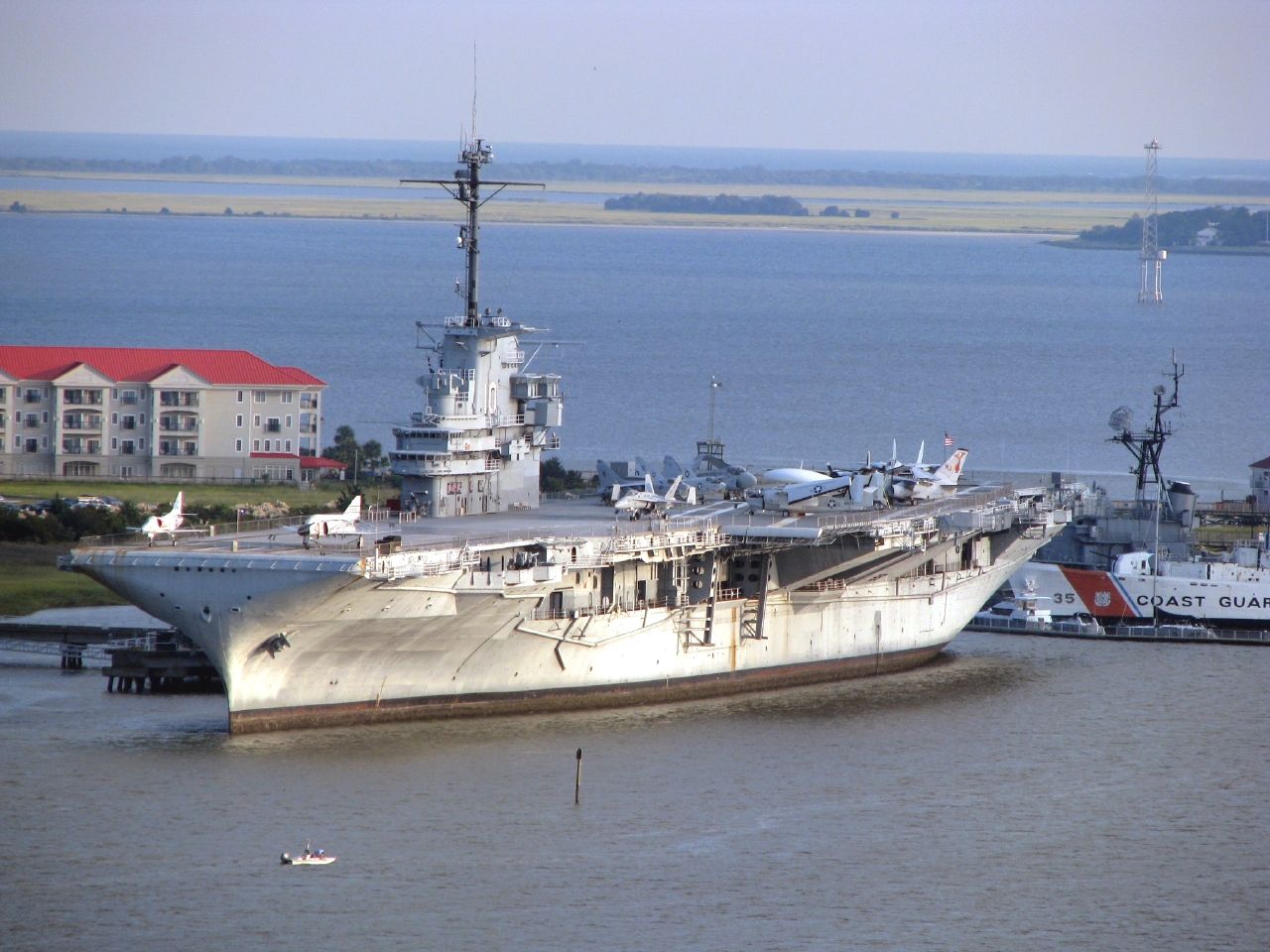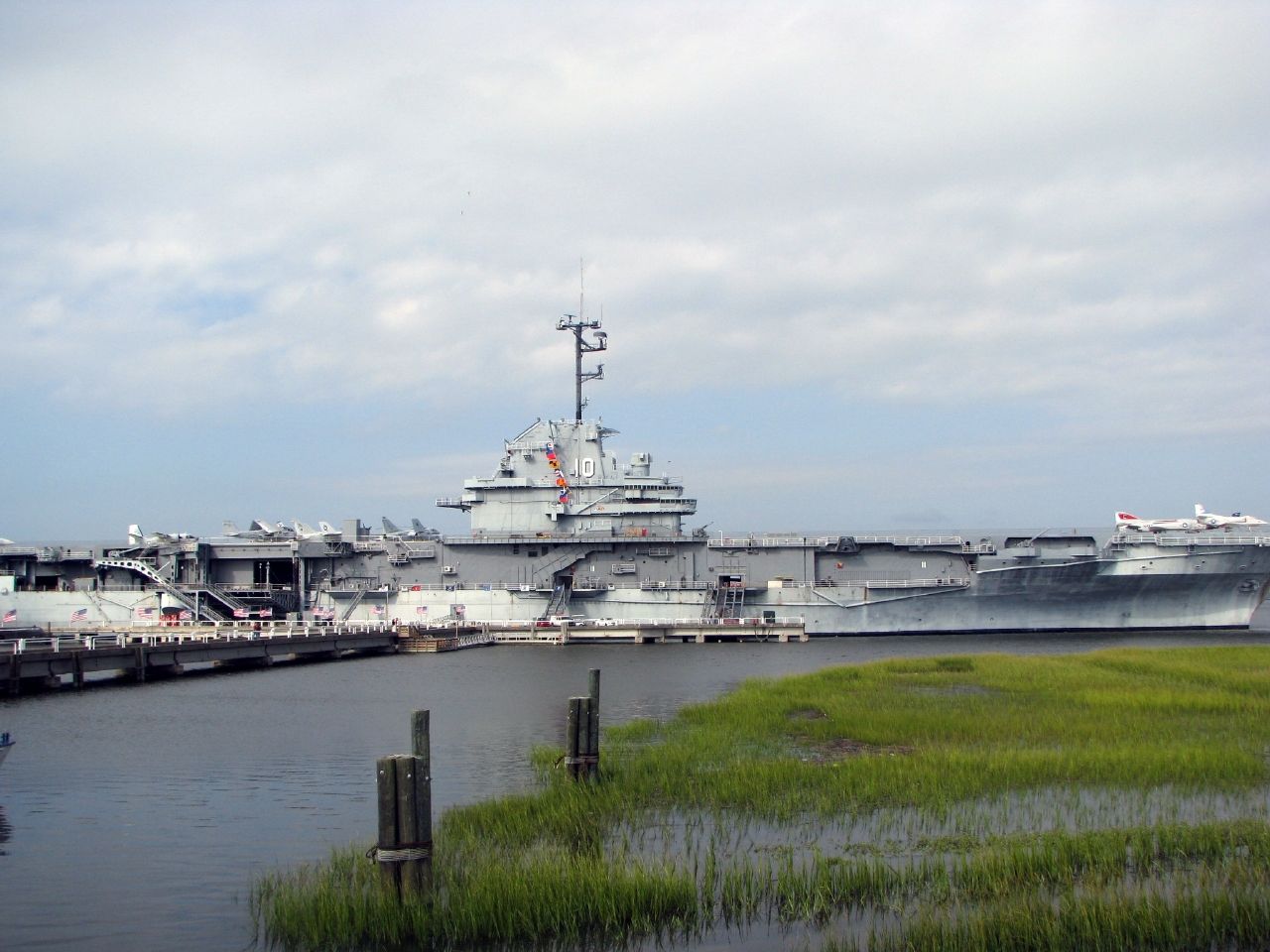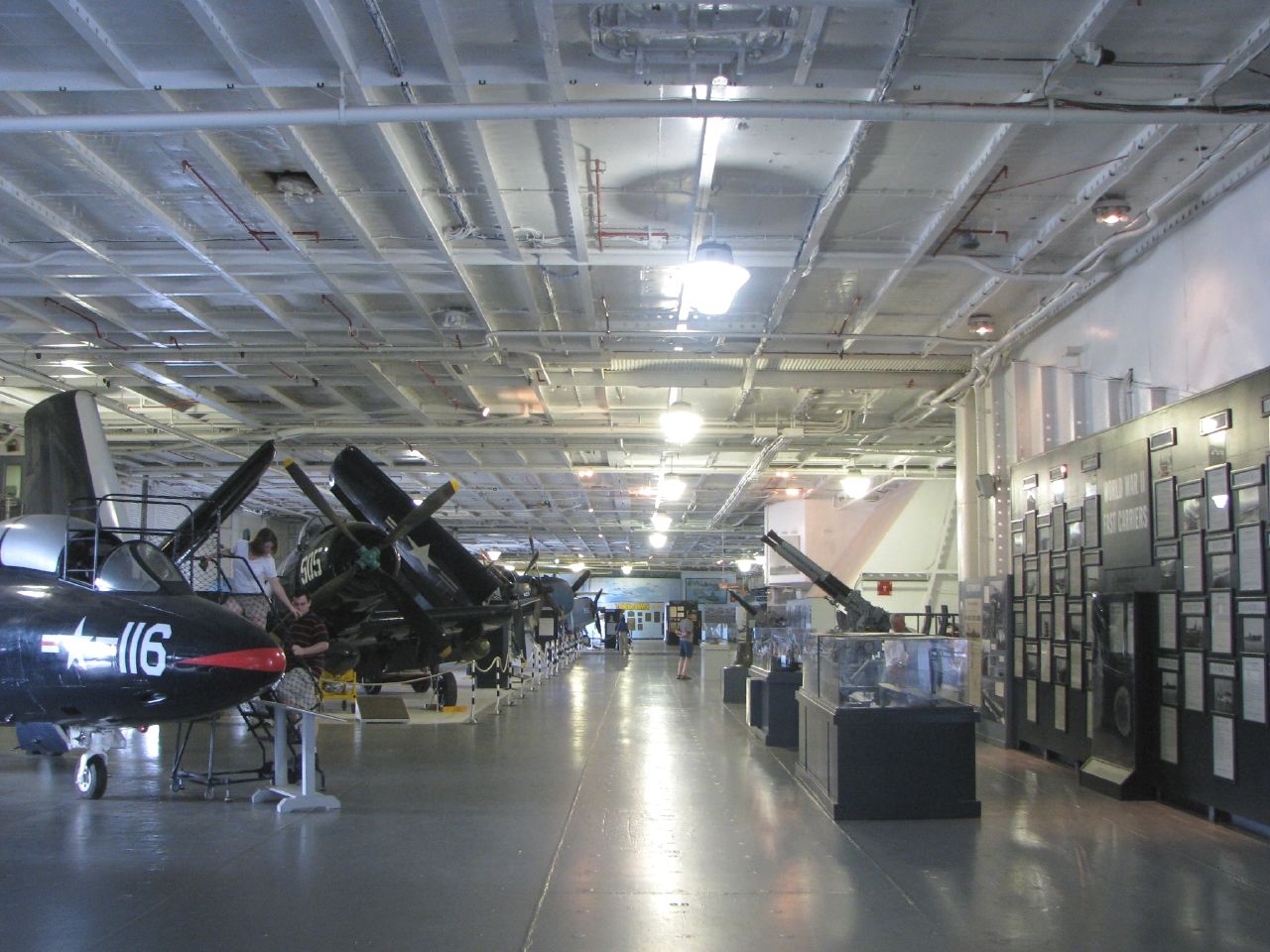Patriots Point Naval & Maritime Museum; Mt. Pleasant, South Carolina (September 2008)
We wanted to make sure we visited the Essex-class aircraft carrier USS Yorktown (CV/CVS-10) while we stayed in Charleston. Our first glimpse came as we crossed the Arthur Ravenel Bridge over the Copper River, heading into Mount Pleasant. Even here, high upon the bridge deck nearly 190 feet above the water, the Yorktown cut an impressive figure along the harbor. We would soon arrive at the Patriots Point Naval & Maritime Museum.
Distinguished Service

The Yorktown held a fascinating history that began in 1943 as the nation fought valiantly in World War II. Originally the Navy wanted to give her a different name. However, another ship with the name had been lost in the Battle of Midway so they decided to commemorate the earlier namesake with this one. She served with distinction. She earned 11 battle stars and a Presidential Unit Citation during the Second World War and 5 battle stars during the Vietnam conflict.
Towards the end of her service she deployed as a recovery ship for the Apollo 8 space mission. After a long, successful career, the Navy decommissioned the Yorktown in 1970. She became a formally-designated memorial in 1975 on the Navy’s 200th anniversary. Now the Yorktown serves as a floating historic site, the crown jewel of the Patriots Point Naval and Maritime Museum.
The ship’s size becomes almost overwhelming as one gets closer. The flight deck extends 890 feet, or nearly the length of three football fields. Some 90-100 aircraft used to cram into the Yorktown’s massive hangar bays during her years of service. Nonetheless, and in spite of her immense weight, she could still cruise at 33 knots or close to 40 miles per hour.
Moored at Patriots Point

The Yorktown uses Patriots Point as her home port now (map). Several other ships moor along the same set of piers and collectively they form the majority of the museum. Visitors can climb aboard and tour through a destroyer, a coast guard cutter and a submarine in addition to the Yorktown.
We enjoyed the submarine USS Clamagore (SS-343) in particular. It amazed us that people could live within such a tightly confined space for long periods underwater. We felt practically claustrophobic simply walking from one end to the other, squeezing through small compartments. Each could be sealed into watertight spaces during emergencies.
The museum contained land-based exhibits, too. We walked through a mock-up of a U.S. Naval Advanced Tactical Support Base (ATSB) circa 1965. These served the “Brown Water Navy” that patrolled Vietnam’s extensive waterways during the war.
The Flight Deck

We boarded the Yorktown and climbed up to the flight deck. Its size and length impressed us. However it fell terribly short as compared to its land-based counterparts. Only arrestor cables running across the landing area and a tailhook dangling from an aircraft might keep a pilot from dropping into the Ocean. The arrangement offered frighteningly little margin for error.
The landing area of the Yorktown became a museum within a museum. Numerous carrier-based aircraft, both jets and helicopters, lined the deck. Visitors can walk amongst them and get a closer look. While the fighters get much of the attention, in fact many different aircraft served in vital support roles.
As an example, the Navy used the aircraft on the right, an E-1B Tracer, as a warning system and for guidance support. Notice the large radome filled with sensitive electronics extending over the top of the aircraft. A Tracer could fly hundreds of miles away from the Yorktown, detect distant ships and aircraft, and relay positions back home. It increased battlefield intelligence by providing a distant set of eyes. The crew gave it affectionate nicknames such as “Stoof with a Roof” and “Willie Fudd.”
A SH-3G Sea King manufactured by Sikorsky sits immediately to its left. The Navy used this versatile all-purpose helicopter for several decades. It served well during the early space programs including Mercury, Gemini and Apollo, ably plucking astronauts from ocean waves after capsule reentry. It could also land on water for brief periods of time without taking on water, an ideal ability for a ship-based helicopter.
Hangar Bays

Next we toured through the cavernous hangar bays running the entire interior length of the ship. Aircraft remained here under protective cover where they could be maintained, repaired or readied for missions. Massive elevators raised aircraft from the hangar bays to the flight deck. Today this provides ample space for museum exhibits. This particular scene shows Hangar Bay #2, looking towards Hangar Bay #1. A third hangar bay also existed in the opposite direction. As incredible as it may seem from this angle, there’s still another third of the ship not in view!
A Grumman TF-9J Cougar can be seen to the immediate left. These flew immediately after the Korean War and featured a modern swept-wing design. As an interesting aside, the Blue Angels aerial demonstration team used Cougars as their first fighter jet, replacing earlier propeller aircraft. On the Yorktown today, visitors can actually sit in the cockpit by way of a platform built along the side of the jet. Kids love to climb into the cockpit as I can attest by the number of times my children requested that opportunity.
Cramped Quarters

I have a friend who once lived on a boat at a marina. I visited one time and remarked upon its grand size. His responded that even though it might be considered large as boats may be concerned, it was actually a very small apartment. I got the same feeling from the Yorktown once we took some of the tours along the lower decks below the hangar bays.
Tour 1, which covered the living and working areas drove this point home even further. Yes, the Yorktown seemed large and cavernous as a museum. However, keep in mind that 2,500-3,000 sailors served there at any given time. Every space had a purpose and no room went to waste. Narrow corridors and steep ladder-like stairways interlaced with compact rooms of clearly designated purposes. Seamen slept like cordwood, stacked one above the other, among row upon row of tightly packed bunks. Privacy barely existed, a luxury that simply could not interfere with important military purposes.
UPDATE: In 2019 I got to fly out to an actually deployed aircraft carrier, the USS John C. Stennis.

Leave a Reply